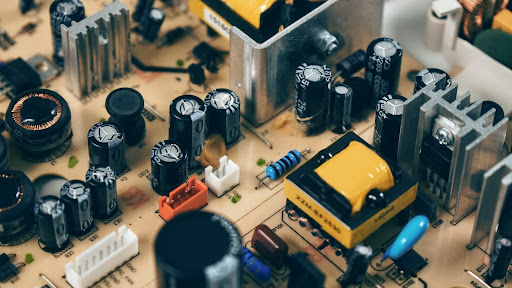Energy independence is no longer a dream reserved for off-grid adventurers. With modern technology, any household can produce, store, and manage its own electricity. By combining solar panels with battery storage, homeowners across Canada are creating personal energy hubs that keep their homes powered through storms, blackouts, and rising utility costs.
This guide explains how to design a reliable home energy hub — from understanding how the system works to choosing the right components like inverters, batteries, and portable power stations that tie it all together.
1. What Is a Home Energy Hub?
A home energy hub is a self-contained power ecosystem that lets you generate, store, and use electricity efficiently. Instead of relying solely on the grid, you balance between solar generation, stored energy, and external supply.
Here’s what that means in simple terms:
- Solar panels capture sunlight and convert it into electricity.
- Battery storage saves excess power for later use.
- Inverters manage how power flows between your home, the battery, and the grid.
- Optional power stations add flexibility — they can serve as portable battery units or emergency backups that plug right into your household system.
In short, a home energy hub gives you control — turning your house into a mini power plant.
2. Why You Should Build One
Canada’s weather is unpredictable: snowstorms, ice buildup, and high winds can knock out the grid for hours or days. Electricity prices are also rising, and solar power has become more affordable than ever.
Building your own energy hub helps you:
- Stay powered during blackouts.
- Reduce your energy bills by storing solar power instead of buying expensive grid electricity.
- Lower your carbon footprint.
- Gain independence from volatile energy markets.
For rural areas or cabins far from the grid, the benefits are even greater — a reliable setup with solar and battery storage can eliminate the need for diesel generators altogether.
3. Understand How Solar and Battery Storage Work Together
At the heart of your home energy hub lies the relationship between solar panels and batteries.
During the day:
- Solar panels generate electricity, powering your home directly.
- Any surplus is stored in your battery system or exported to the grid.
At night or during cloudy days:
- Your battery discharges stored energy to keep your appliances running.
When connected properly, the two systems create a seamless, 24-hour power supply — and a power station can act as a bridge, extending storage or providing mobile backup power when needed.
4. Assess Your Home’s Energy Needs
Before buying equipment, calculate how much electricity your household actually uses.
Check your utility bills for average monthly consumption (measured in kilowatt-hours, or kWh). Then consider:
- Essential circuits (lighting, fridge, heating fan)
- High-load devices (air conditioning, washer, electric oven)
- Duration you want to sustain power if the grid fails
A typical Canadian household uses around 700–1,000 kWh per month, but for backup, you only need to cover essential loads — roughly 10–20% of that.
Once you know your baseline, you can size your solar array and battery system properly.
5. Choose the Right Solar Panels
Solar panels come in many types, but the most common for home systems are:
- Monocrystalline panels: High efficiency, space-saving, ideal for rooftops.
- Polycrystalline panels: Slightly cheaper, lower efficiency, good for larger roofs.
- Thin-film panels: Lightweight and flexible, suitable for non-traditional installations.
When choosing, consider:
- Sunlight exposure: South-facing roofs get the most direct sunlight in Canada.
- Snow and wind tolerance: Check the panel’s mechanical load rating.
- Efficiency rating: The higher, the more energy per square metre.
For an average household, 4–6 kW of solar capacity is enough to offset most daily usage.

6. Choose Your Battery System
The battery is the core of your energy hub — it stores excess energy for when you need it most.
Two main types dominate the market:
• Lithium Iron Phosphate (LiFePO₄)
- Long lifespan (3,000+ cycles)
- Safe and stable in cold climates
- Commonly used in residential systems and high-end power stations
• Lithium-Ion (NMC)
- Higher energy density, slightly smaller
- More common in portable devices and electric vehicles
Look for a capacity that matches your needs:
- Small homes or apartments: 3–5 kWh
- Family homes: 10–15 kWh
- Full off-grid cabins: 20 kWh or more
For flexibility, you can supplement your fixed battery bank with a portable power station. It can plug into solar panels directly and act as a modular expansion — useful for emergencies or powering specific rooms.
7. The Role of the Inverter
An inverter converts the DC power stored in batteries or produced by solar panels into AC power, which your home appliances use.
A good inverter should:
- Support bidirectional flow (charge and discharge).
- Offer pure sine wave output to protect sensitive electronics.
- Integrate easily with smart monitoring systems or mobile apps.
Some advanced hybrid inverters manage solar, grid, and battery inputs simultaneously — automatically switching sources depending on demand or availability.
8. Integrate a Power Station for Versatility
Even with a full solar + home battery system, there’s value in adding a portable power station.
Here’s why:
- It serves as an independent backup when the main system is offline.
- You can move it around the house, use it for outdoor tools, or take it camping.
- It charges from solar panels, wall outlets, or even your vehicle.
- It can bridge short-term blackouts without starting a generator.
In essence, your power station becomes the “mobile limb” of your home energy hub — expanding your flexibility without complex wiring.
Some homeowners also use them as secondary battery modules during high-demand periods, connecting them to their solar arrays to temporarily boost total storage capacity.
9. Smart Monitoring and Energy Management
Once your system is running, smart management tools can dramatically improve efficiency.
Modern solar inverters, batteries, and power stations often come with companion apps that display:
- Real-time generation and consumption data
- Battery charge and discharge levels
- Historical energy savings
- Alerts for grid outages or maintenance needs
This visibility lets you make informed decisions — such as running laundry when solar output peaks, or reserving stored power for overnight heating.
10. Installation and Safety Tips
While DIY solar setups are popular for small systems, home-scale installations should follow proper standards.
- Hire a certified installer: Especially for grid-tied systems that require inspection.
- Use proper wiring and grounding: Improper installation can reduce efficiency or cause hazards.
- Protect components from cold and moisture: Install batteries and power stations indoors or in insulated enclosures.
- Follow manufacturer guidelines: For temperature limits, ventilation, and maintenance.
If you’re integrating both fixed batteries and portable units, clearly label circuits and use surge protectors to safeguard electronics.
11. Future-Proofing Your Energy Hub
Technology evolves quickly. When choosing components, consider scalability:
- Expandable battery capacity: Some modular systems let you add more storage later.
- Additional solar inputs: Prepare for roof or ground-mounted expansion.
- EV charging compatibility: Future-proof if you plan to own an electric vehicle.
- Integration with smart home ecosystems: Allowing automation based on weather forecasts or electricity rates.
By designing for flexibility today, you can adapt easily as energy technologies advance.
12. Financial Incentives in Canada
To encourage renewable adoption, many provinces offer rebates and programs:
- Canada Greener Homes Grant: Offers up to $5,000 for eligible solar installations.
- Net Metering Programs: Sell excess energy back to the grid for credits.
- Provincial incentives: Vary by region — check your local hydro provider for details.
These programs can reduce payback time and make your energy hub investment more attractive.
13. Real-World Example: A Hybrid Home Setup
Consider a suburban homeowner in Ontario:
- 5 kW solar array on the roof
- 10 kWh wall-mounted battery system
- 2,000 Wh portable power station for mobile or emergency use
- Smart inverter with solar + grid switching
On a sunny day, solar panels power the house and charge both batteries. At night, the main battery runs essentials, while the portable unit covers smaller devices. During winter outages, the portable power station powers lights and communication devices while the main battery handles heating fans.
This combination provides comfort, flexibility, and full energy security without relying on fossil fuels.
Conclusion
Building a home energy hub with solar and battery storage isn’t just a modern convenience — it’s an investment in stability, independence, and sustainability.
By combining fixed solar systems, efficient batteries, and a versatile power station, you can take control of your energy future and protect your home from rising costs and unpredictable outages.



